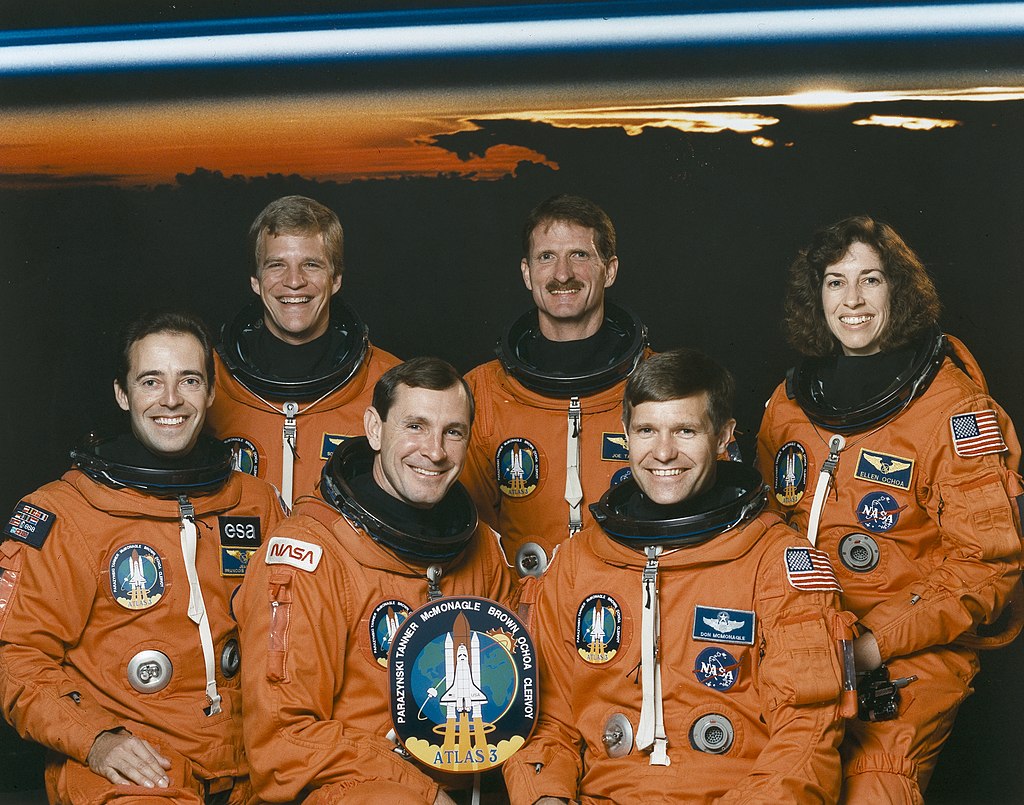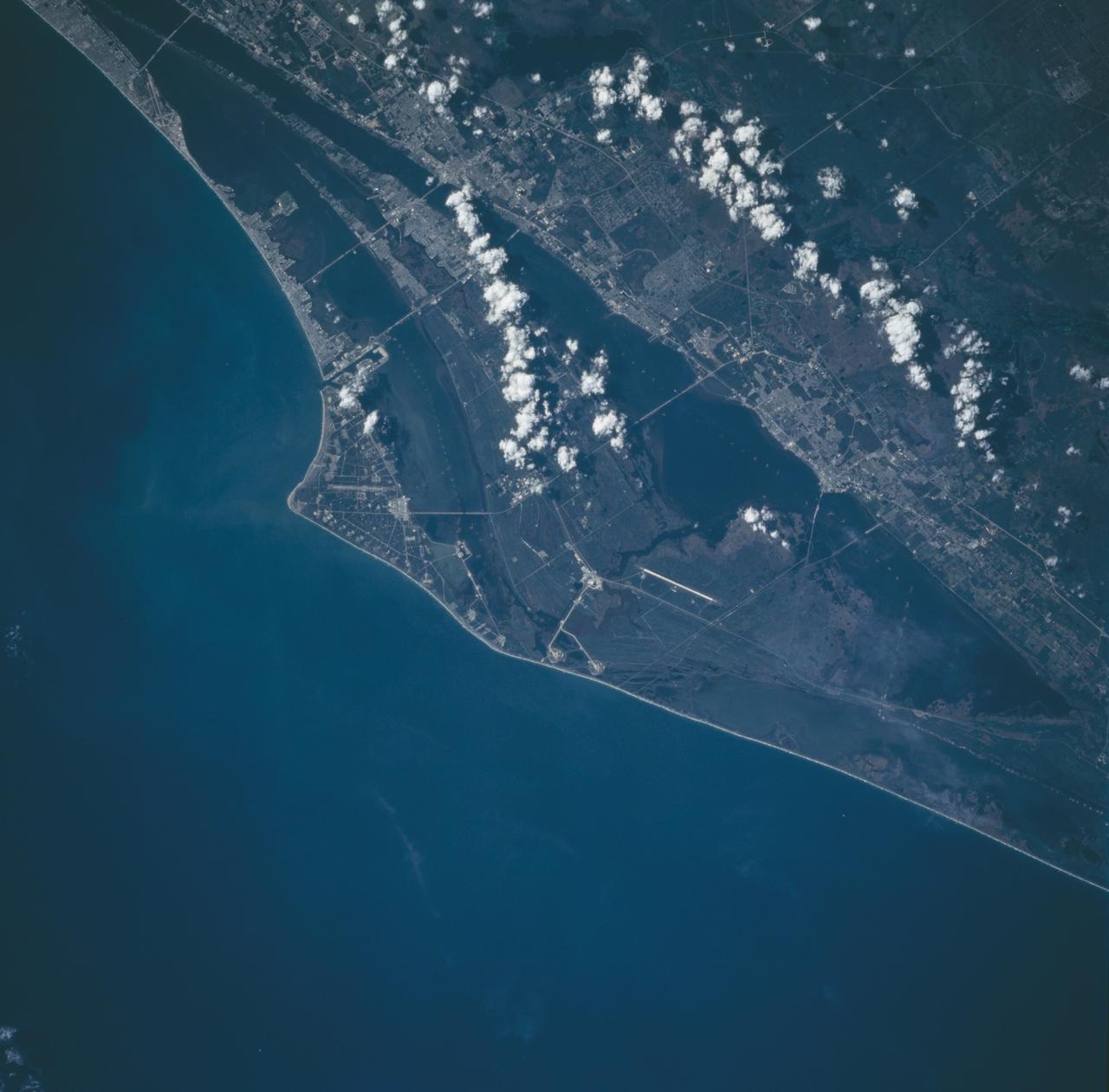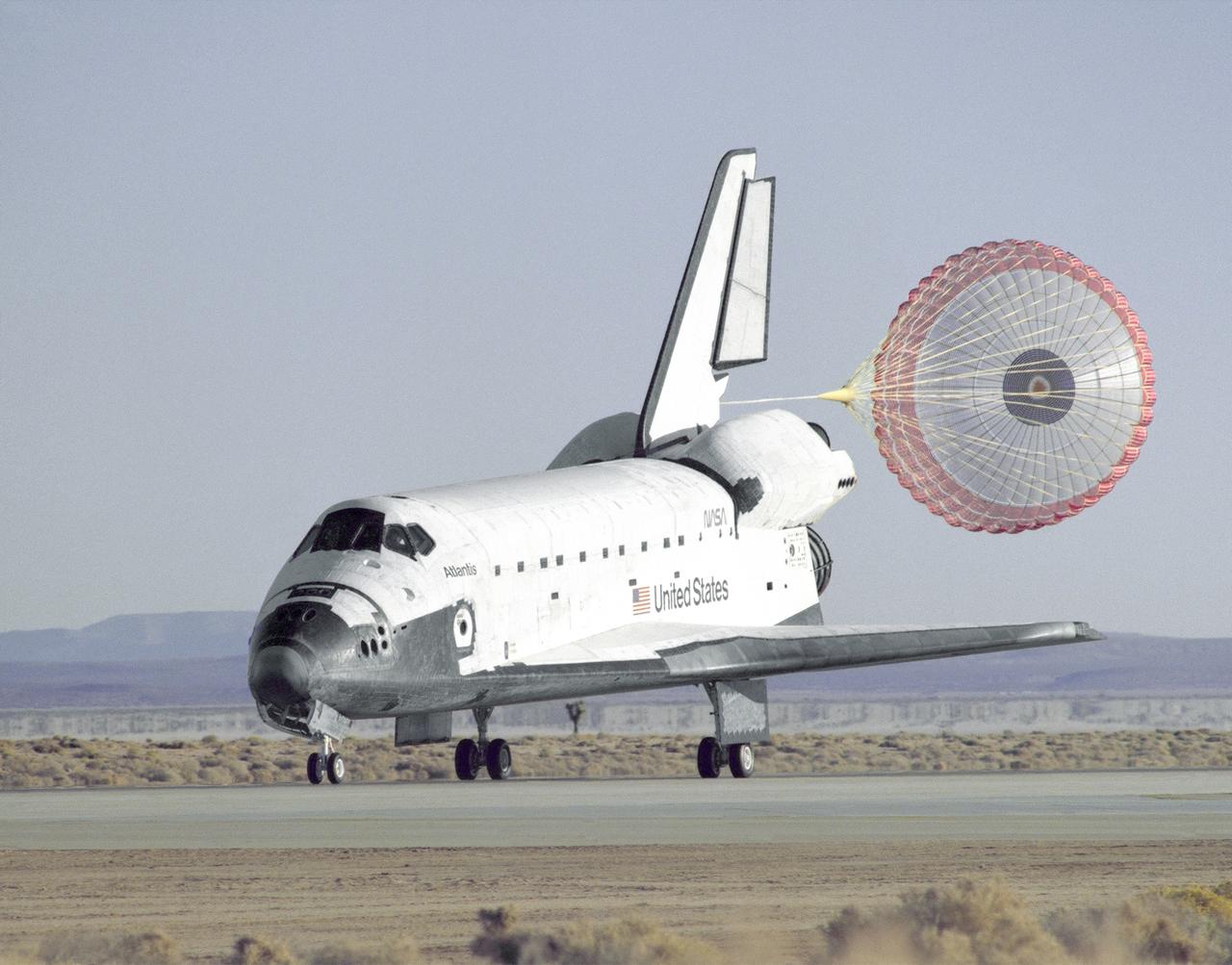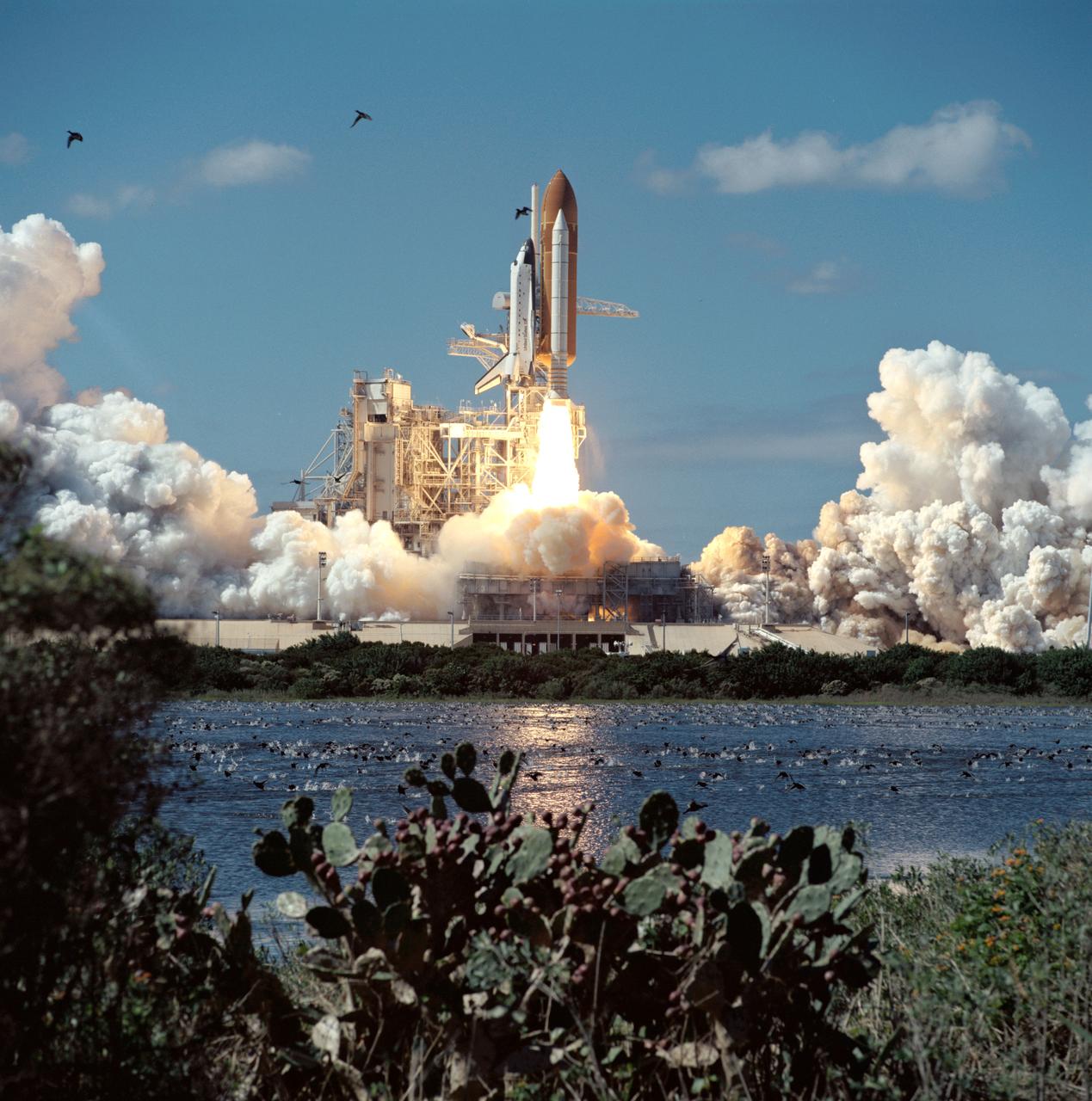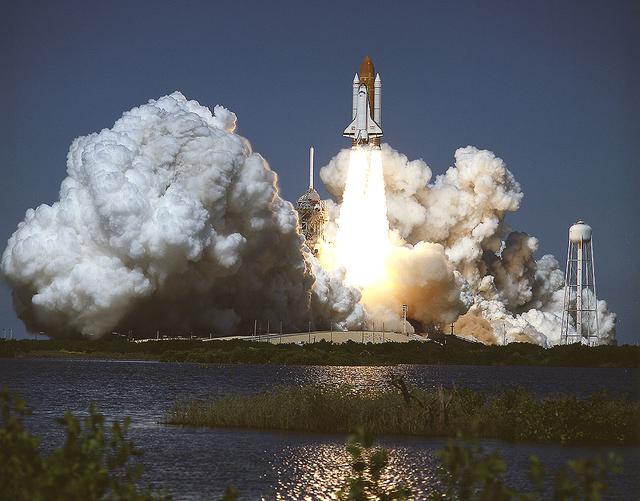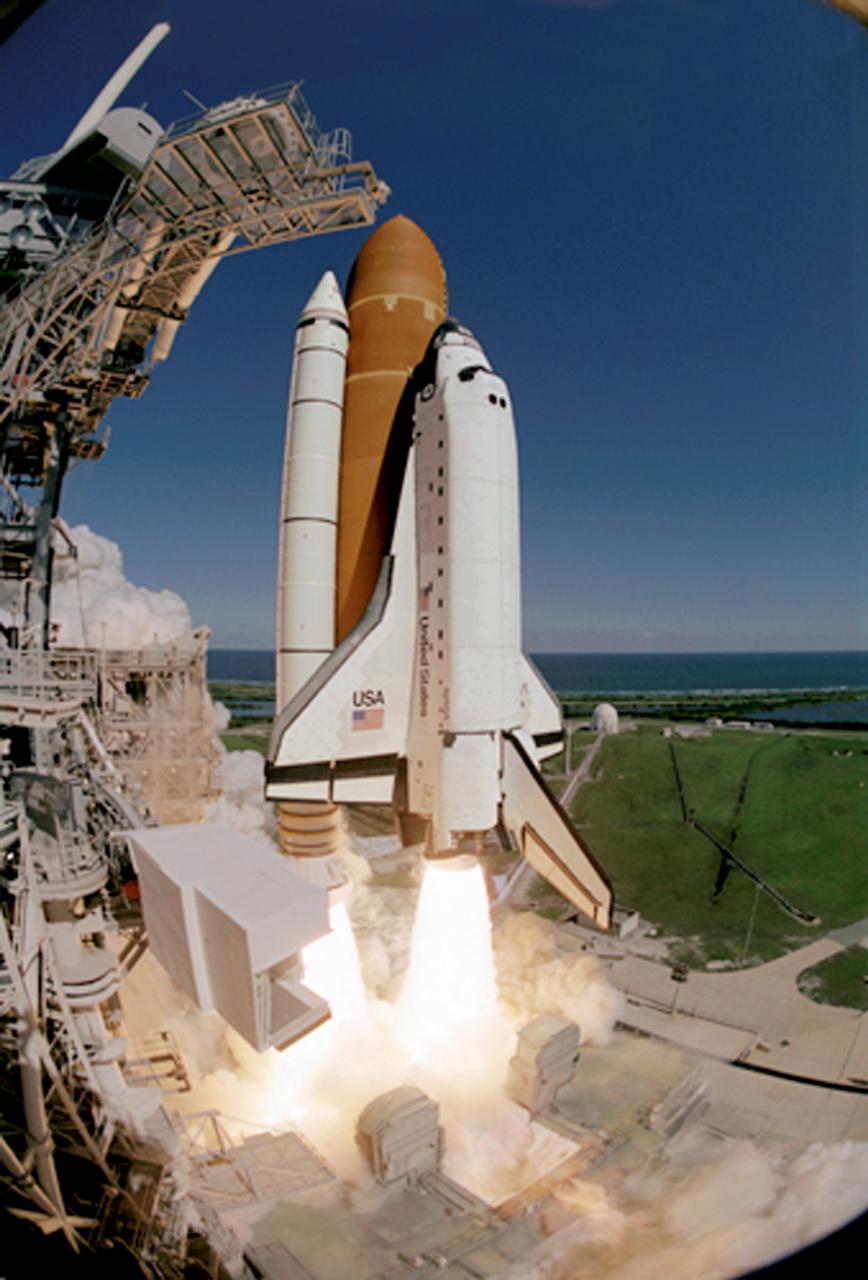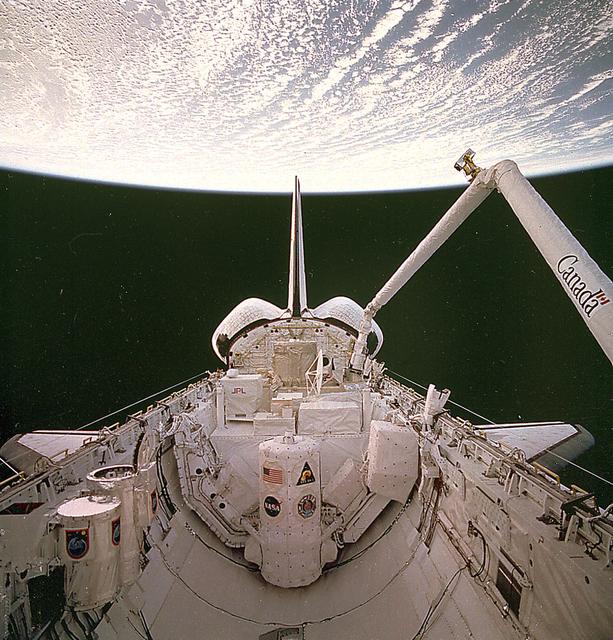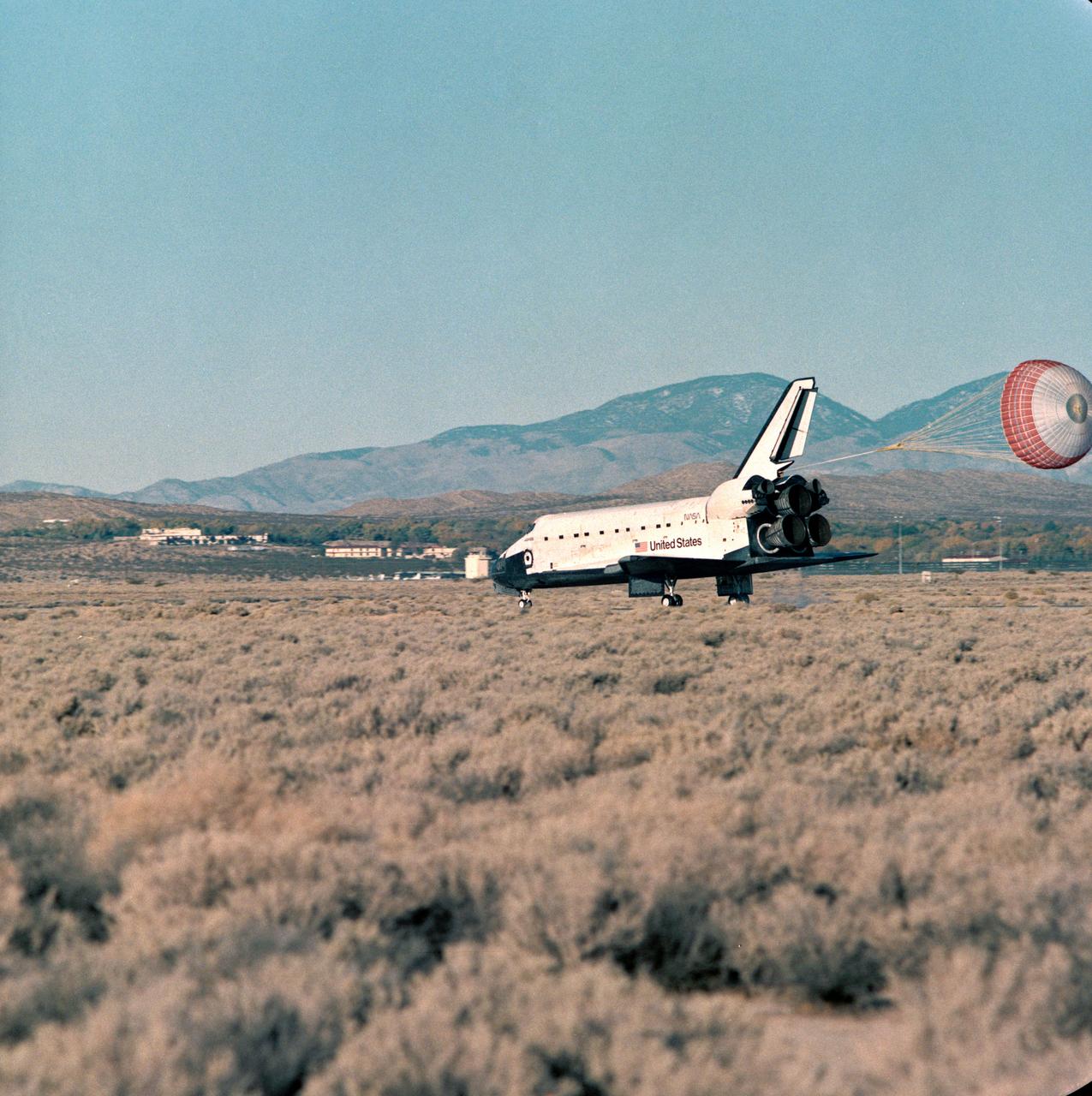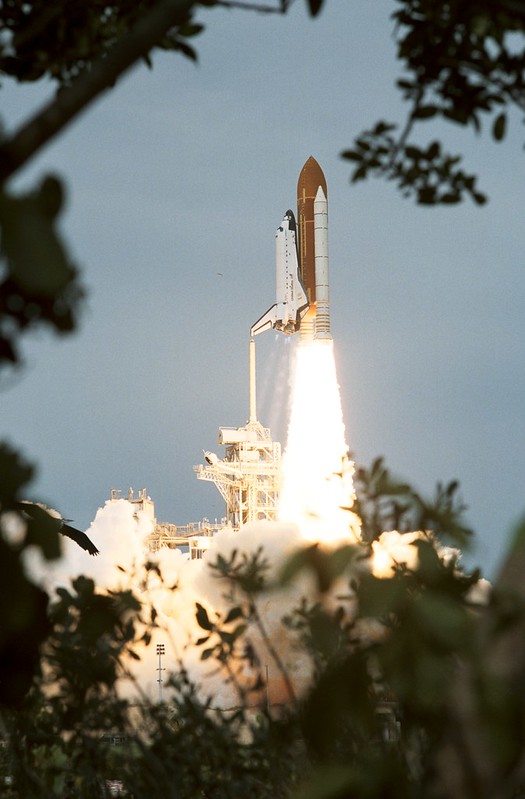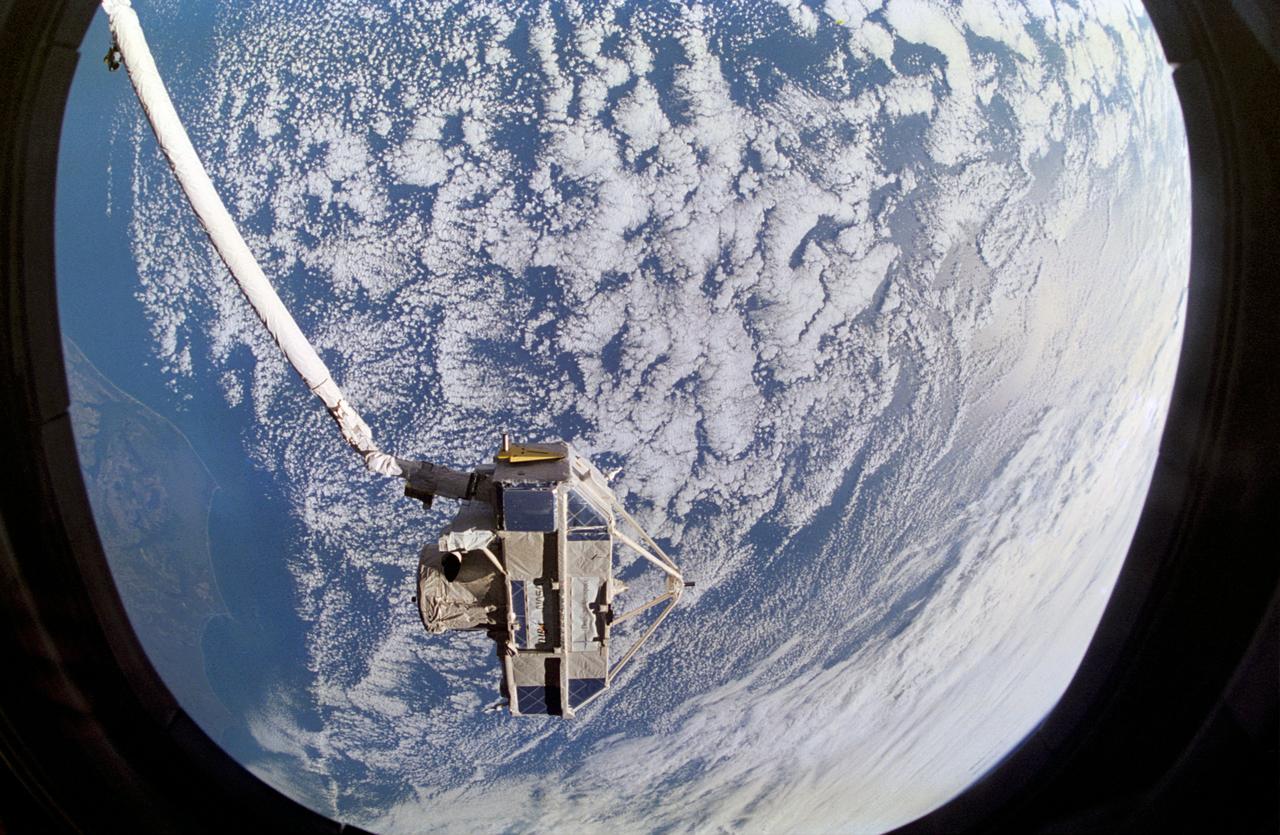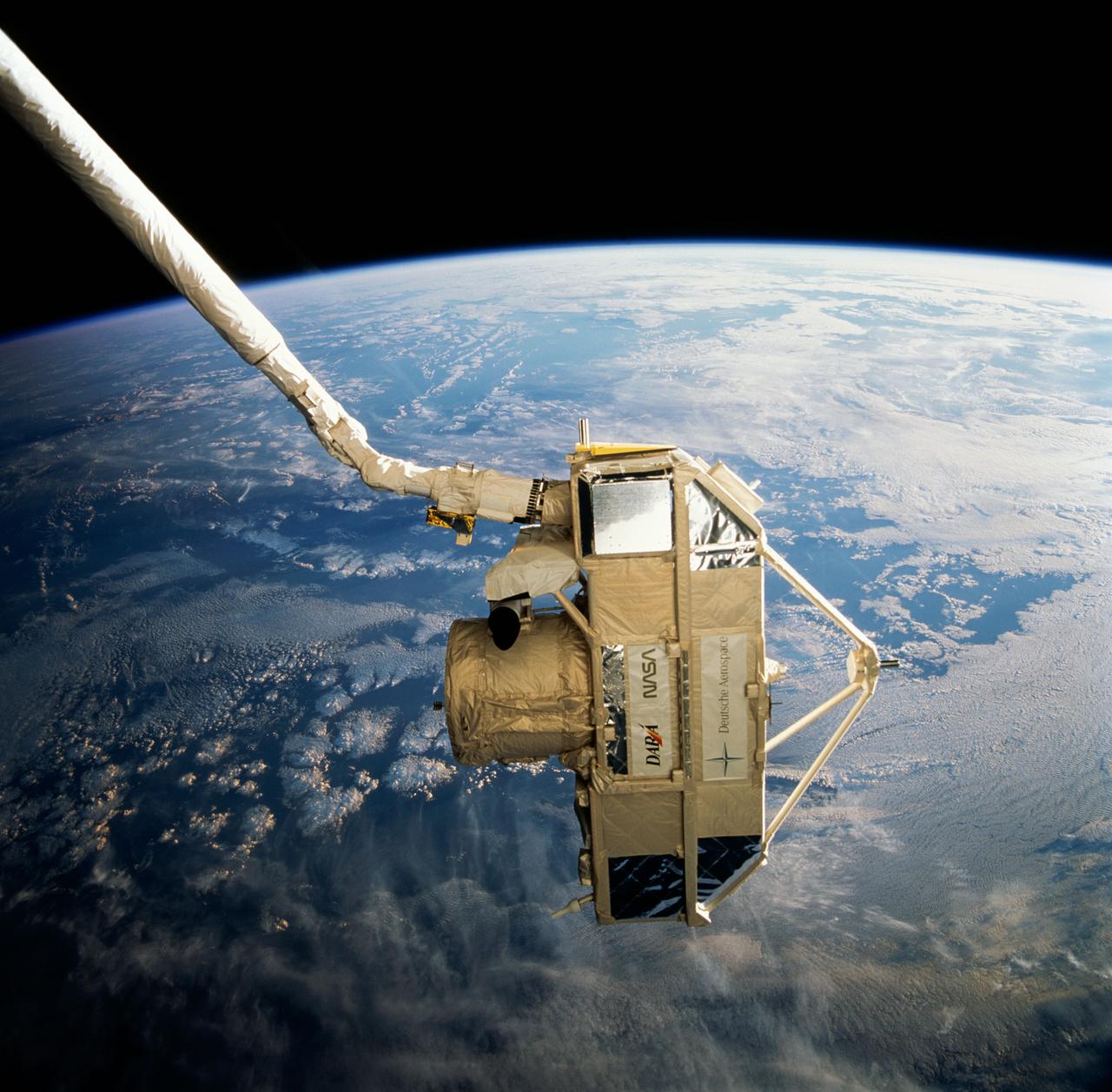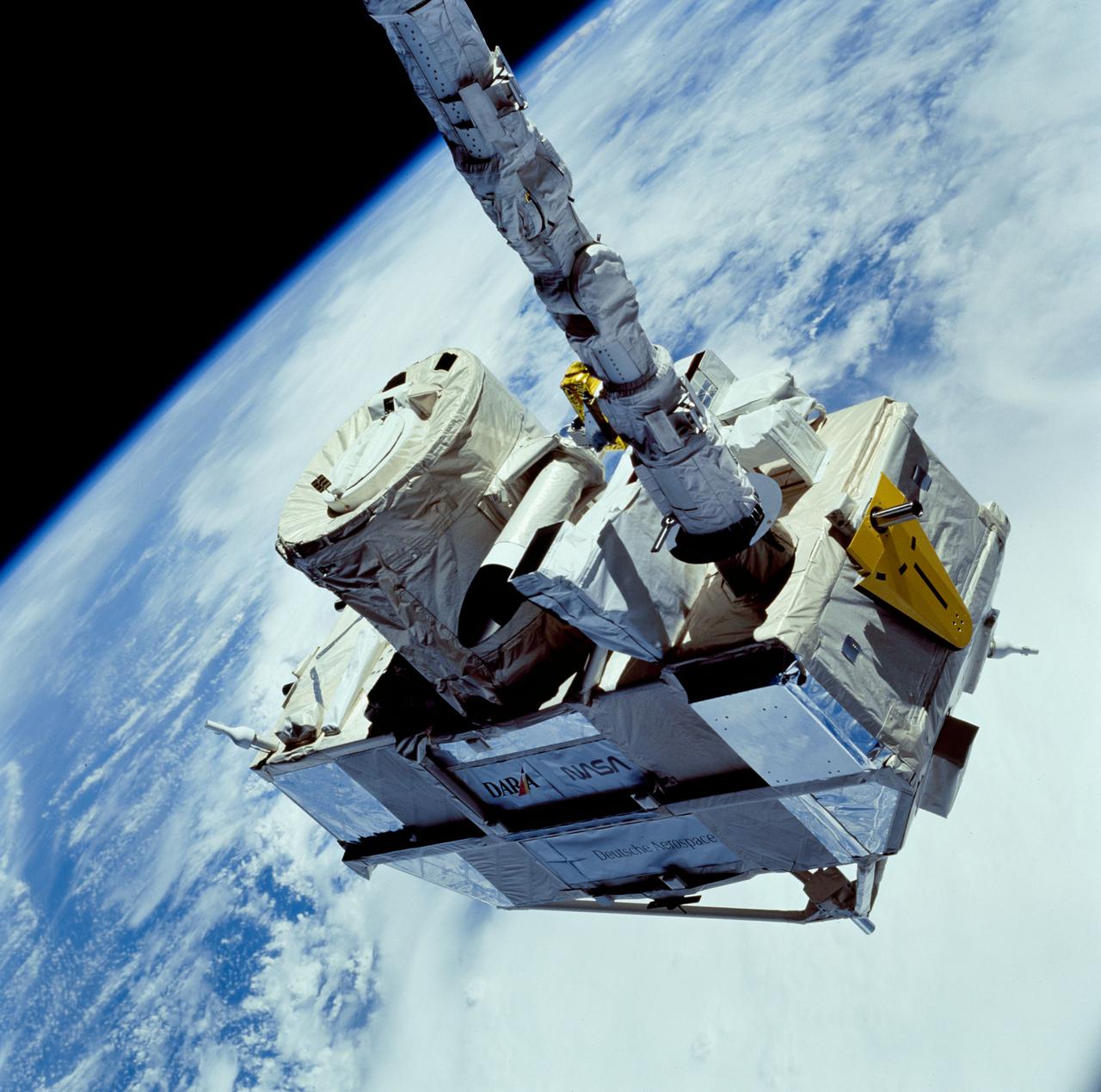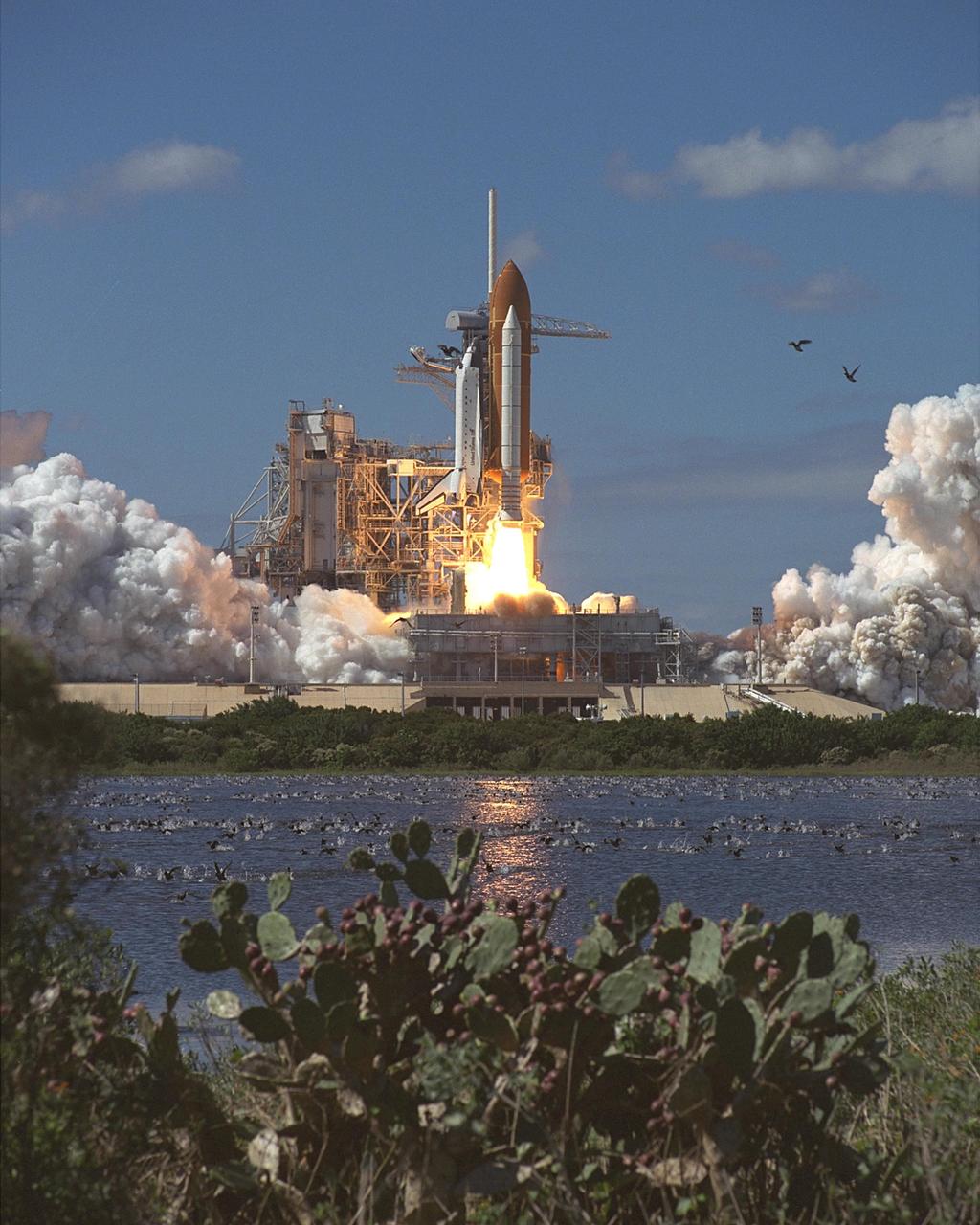STS-66 Fact Sheet
By Cliff Lethbridge

STS-66 — Atlantis
66th Space Shuttle Mission
13th Flight of Atlantis
Crew:
Donald R. McMonagle, Commander
Curtis L. Brown, Jr., Pilot
Ellen Ochoa, Payload Commander
Joseph R. Tanner, Mission Specialist
Scott E. Parazynski, Mission Specialist
Jean-Francois Clervoy, Mission Specialist
Orbiter Preparations:
Tow to Orbiter Processing Facility – May 30, 1994
Rollover to Vehicle Assembly Building – October 3, 1994
Rollout to Launch Pad 39B – October 10, 1994
Launch:
November 3, 1994 – 11:59:43 a.m. EST. Launch was delayed about three minutes as a final check on weather at transoceanic abort sites was reviewed. This was the first flight of Atlantis since an extended modification and checkout at the Rockwell plant in Palmdale, California.
Atlantis was sent to California in October of 1992 and returned to the Kennedy Space Center in May of 1994, having been outfitted with improved nosewheel steering, internal plumbing and electrical connections to accommodate an Extended Duration Orbiter pallet.
Atlantis also received electrical wiring to enable installation of the docking module to be used in upcoming Mir Space Station docking missions.
Landing:
November 14, 1994 – 7:33:45 a.m. PST at Runway 22, Edwards Air Force Base, California. Rollout distance was 7,657 feet. Rollout time was 49 seconds. Mission duration was 10 days, 22 hours, 34 minutes, 2 seconds. Landing occurred during the 174th orbit.
Landing was diverted to Edwards Air Force Base due to poor weather at the Kennedy Space Center primary landing site associated with Tropical Storm Gordon.
Mission Summary:
This was the third flight of the Atmospheric Laboratory for Applications and Science (ATLAS-3), designed to collect data on the sun’s energy output and the chemical makeup of Earth’s middle atmosphere and how these factors affect global ozone levels.
Another primary payload was the Cryogenic Infrared Spectrometers and Telescopes for the Atmosphere-Shuttle Pallet Satellite (CRISTA-SPAS).
Designed with the same science objectives as ATLAS-3, CRISTA-SPAS was a deployable/retrievable satellite which was deployed and flew about 25 to 44 miles behind the Shuttle for more than eight days. The satellite made extensive scientific observations of Earth’s atmosphere prior to retrieval.
Atlantis successfully tested orbital maneuvers to be used in the Mir Space Station docking missions upon approach to CRISTA-SPAS for the craft’s retrieval.
SELECTED NASA PHOTOS FROM STS-66
